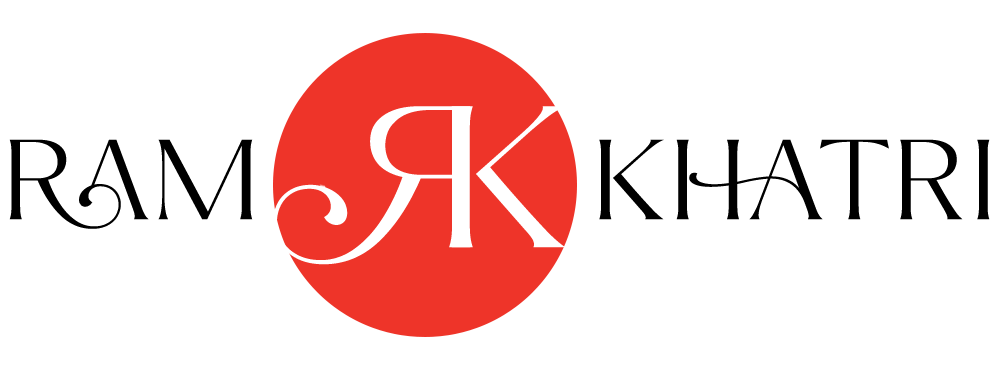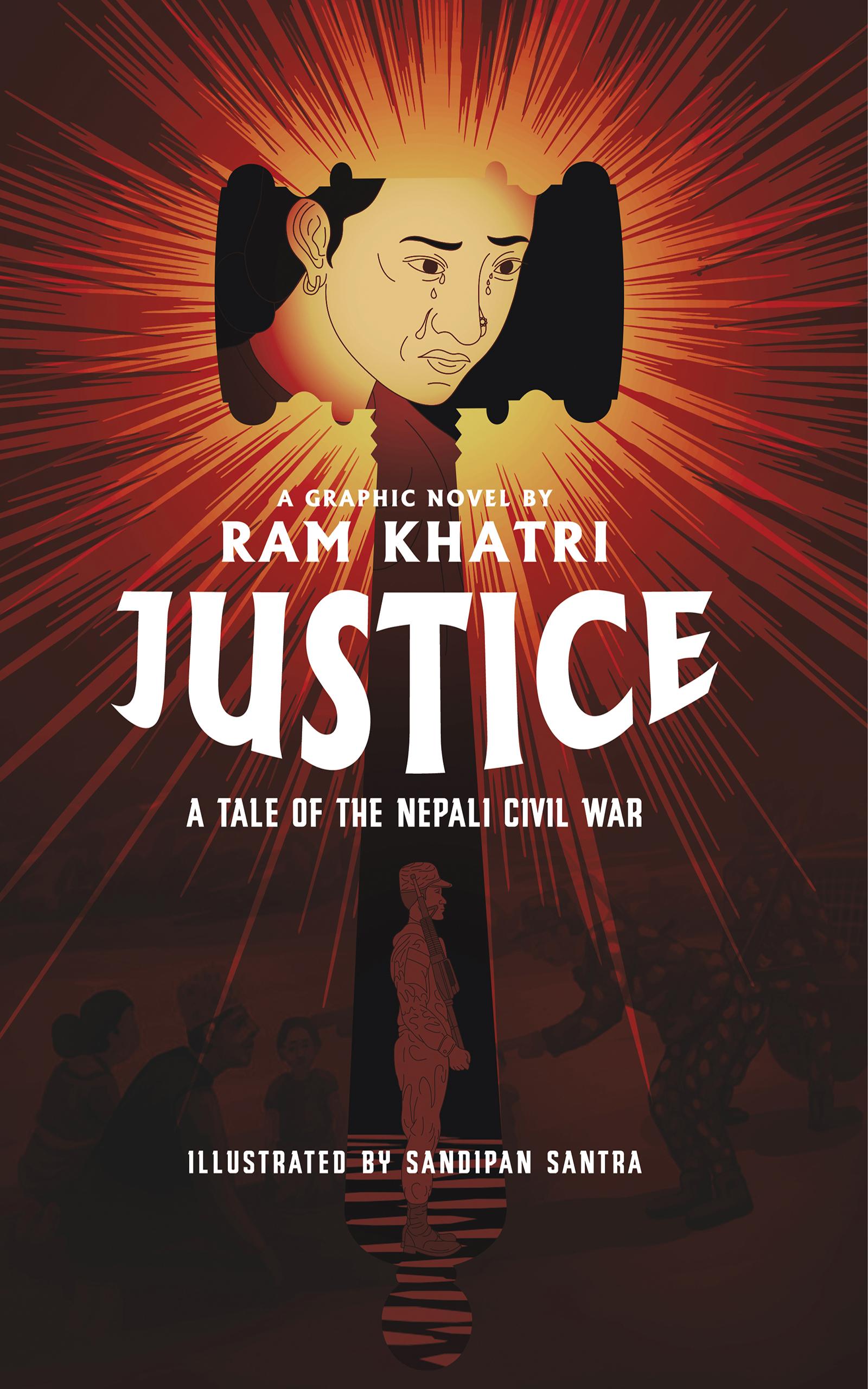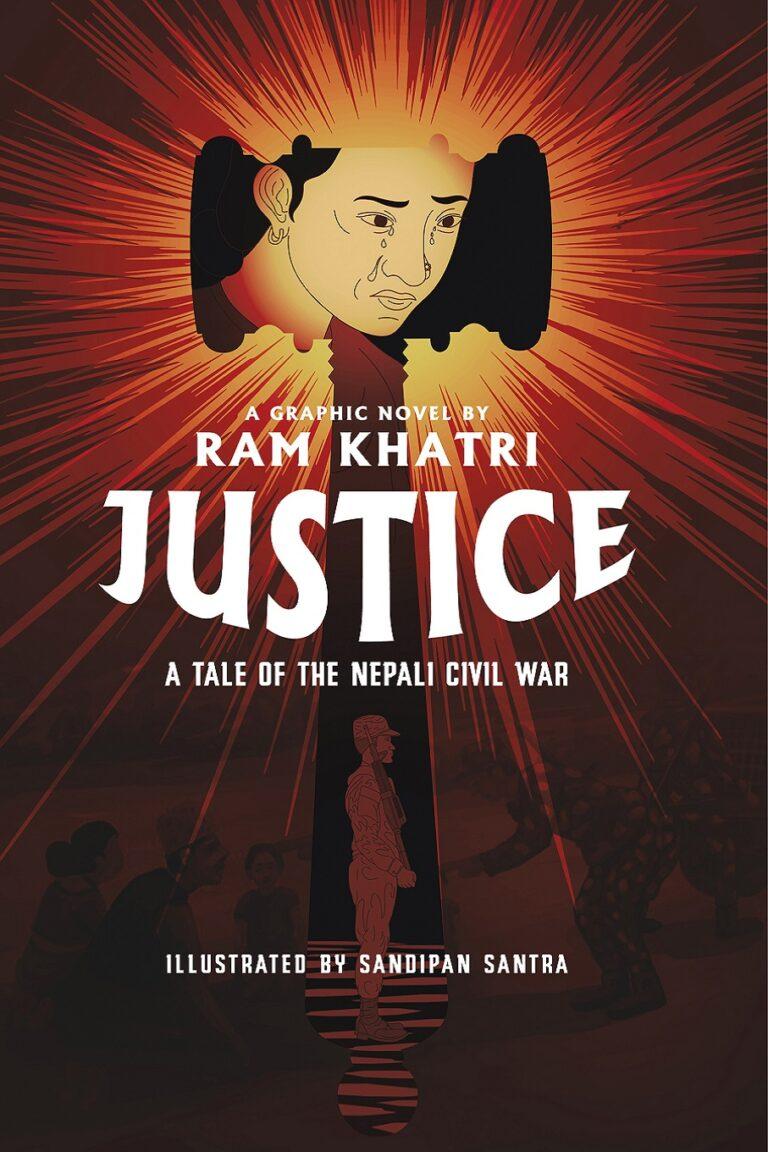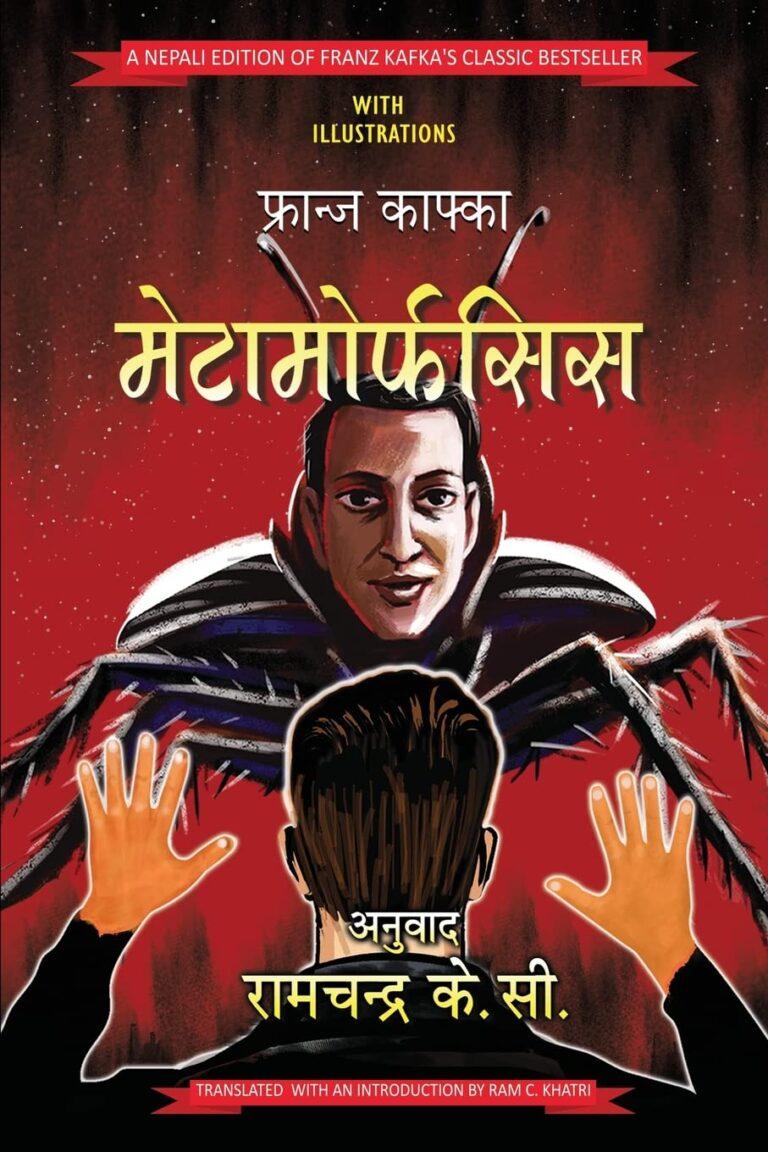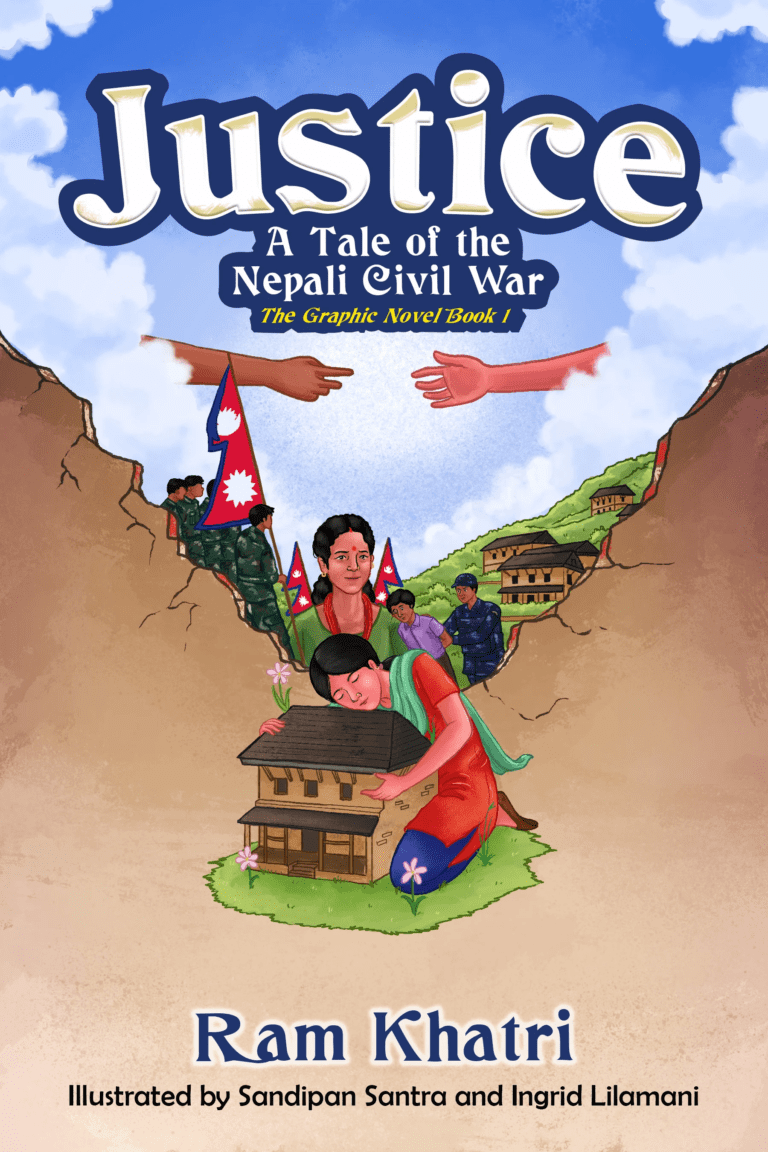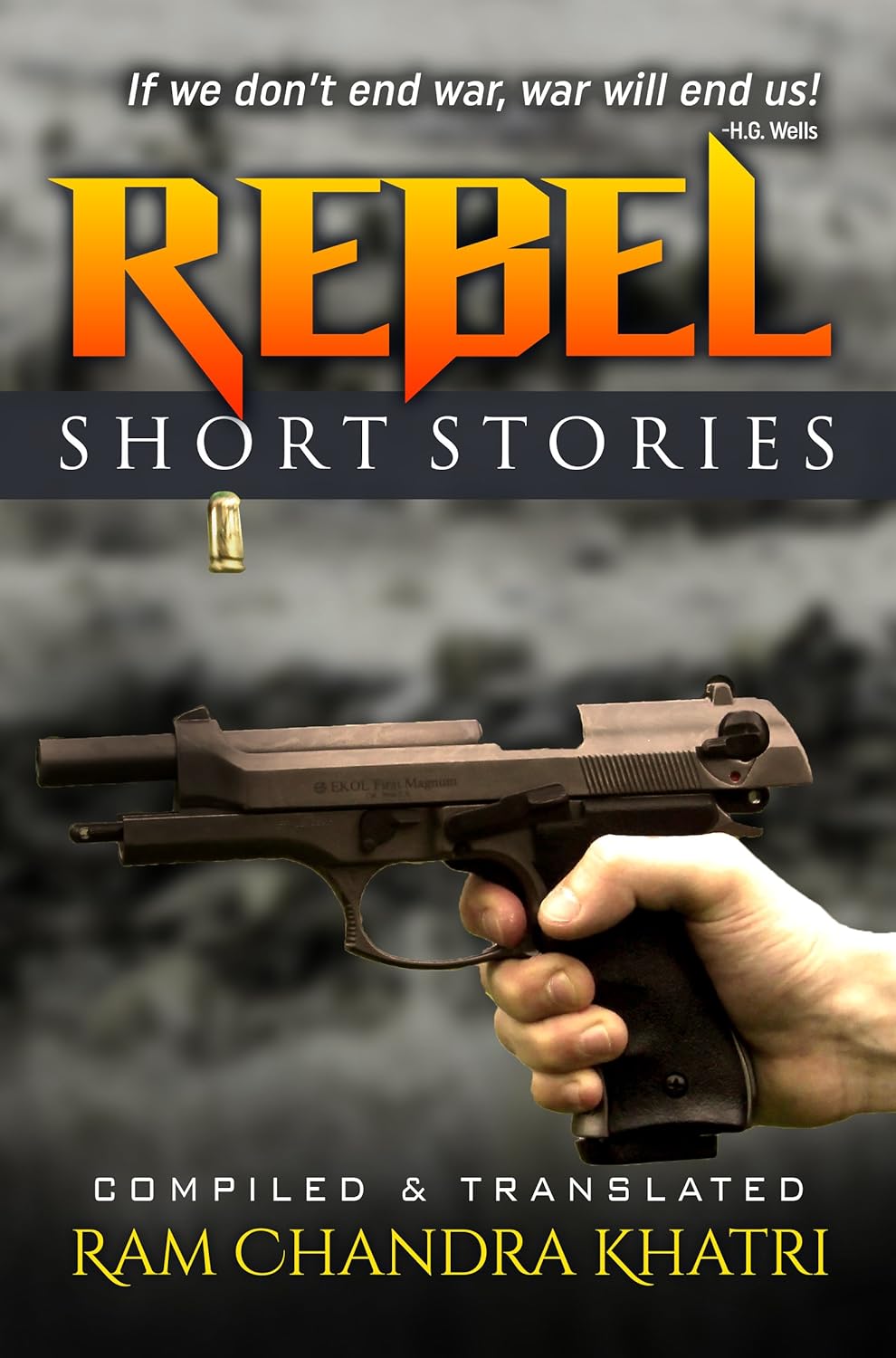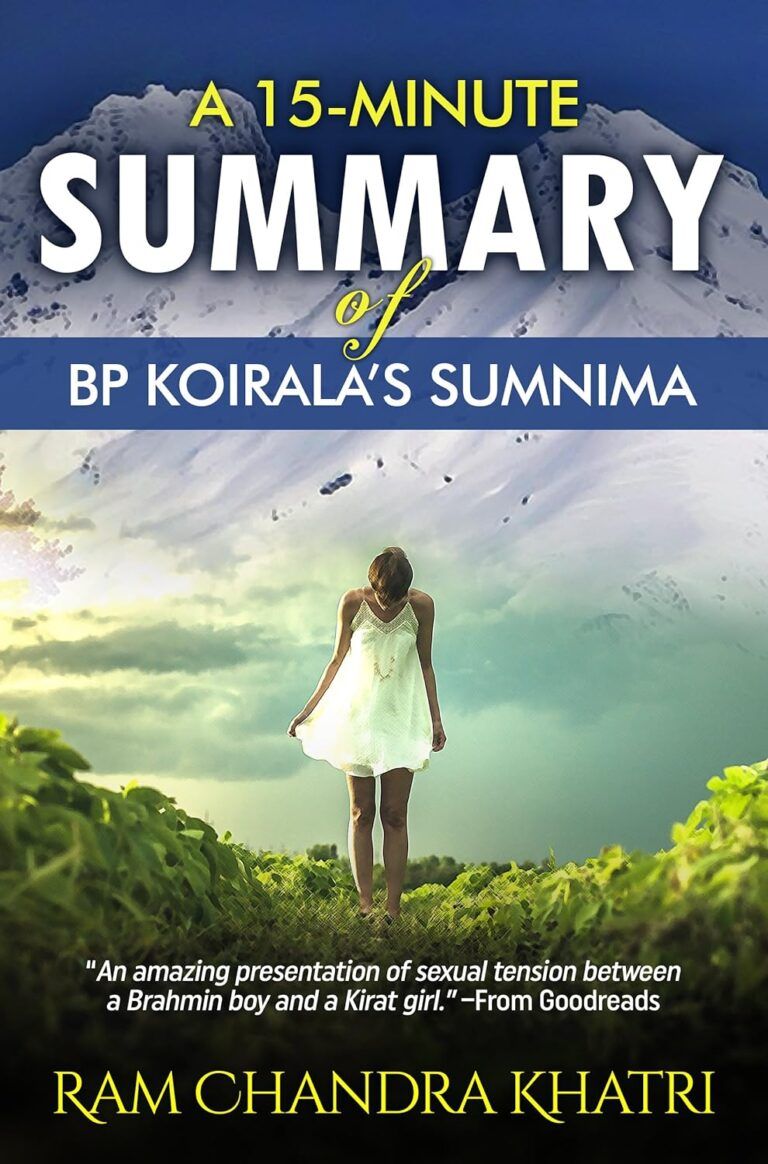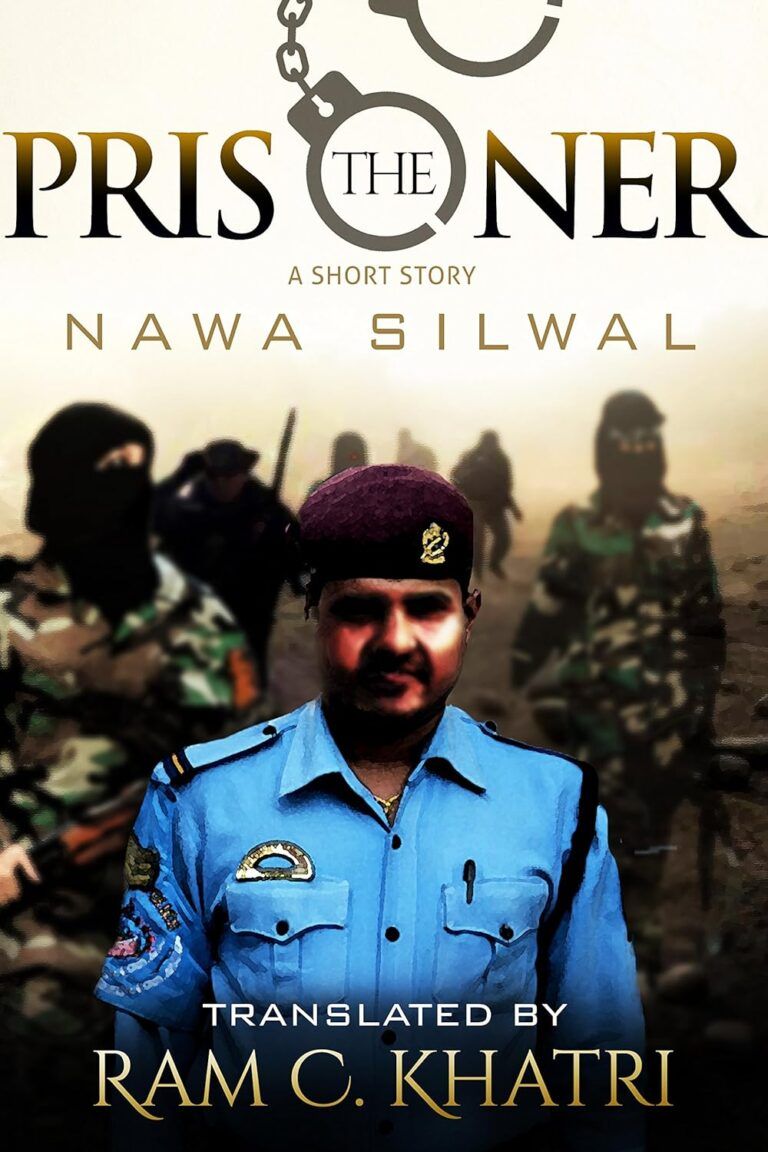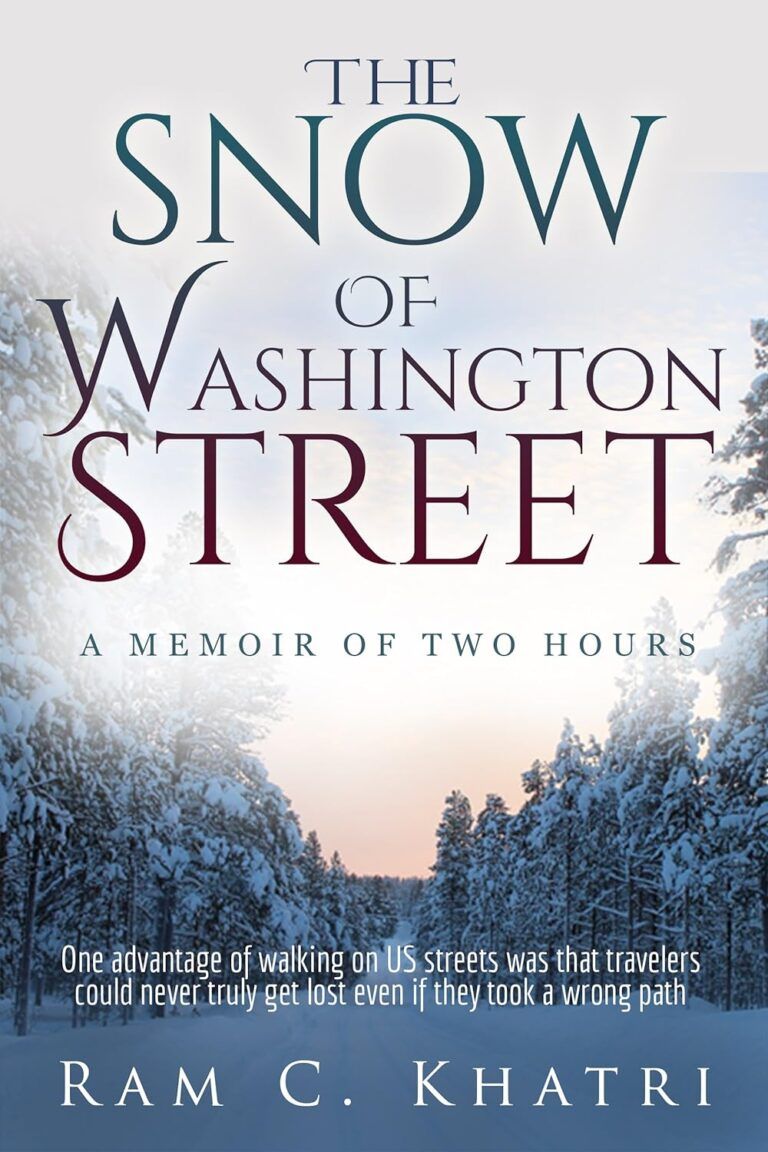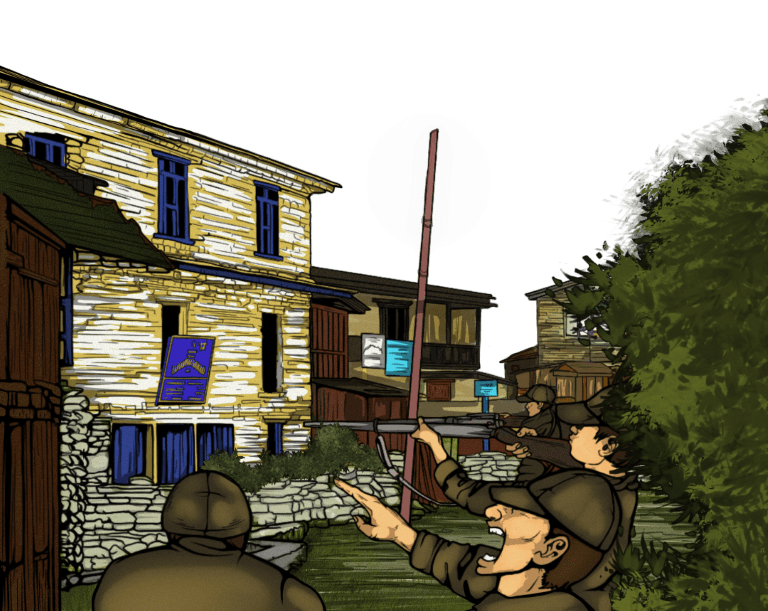Justice: A Tale of the Nepali Civil War
The Complete Graphic Novel - Library Edition
By Ram Khatri | Illustrations: Sandipan Santra | Editing: Blake Hoena
Format:
eBook
$9.99
Paperback
$25.99
Hardback
$35.99
Available on:
In this heartwarming story of family connection, recollection, and survival, the author has revived the memories of the people affected by the Maoist-government war through the displaced to the working farmers.
“It was a simple life; a peaceful life,” narrator Tara muses in Ram Khatri’s pained, humane graphic novel. “At least that’s what I thought in my childhood innocence.” Justice chronicles, from young Tara’s perspective, the end of that innocence, which comes to her Nepali family farm in the form of war.
First, in the early 2000s, her nation is torn between Maoist revolutionaries and government forces, with her father increasingly pressured to take a side. As neighbors turn on each other, and young people are hauled away to fight, Tara’s parents attempt to persevere without involving themselves. But soon soldiers are searching their home as the children hide in the barn, and when the worst happens, Tara blames herself.
Justice: A Tale of the Nepali Civil War is the story of a young girl’s journey to reclaim the life she left behind during the unforgiving conflict of the Nepali Civil War. With its sublime settings, diverse characters, and riveting narrative, the girl learns the truth about the life that she left behind.
“An affecting graphic novel about political persecution in the midst of a civil war, Justice captures a perilous period well.” ―Foreword Clarion Reviews
“Justice is an artistic character-driven way to learn about the recent history of the Nepali civil war.”―Tucker Lieberman, Independent Book Review
“The piercing story of a young woman split from her family during Nepal’s civil war.”―BookLife Review
“. . . encourages the reader to focus on the human face of the conflict and the effect of war on civilians.”―Kirkus Review
“. . . a heart-wrenching story of Nepali suffering during the Maoist rebellion that took thousands of lives and rendered thousands homeless or missing. Khatri’s poignant graphic novel brings to life, vividly, the journey of a young woman to reclaim the traumatic landscape of her past.”—Samrat Upadhyay, Author of Arresting God in Kathmandu
“Along with the main character Tara, the story takes you through the unforeseen struggle in Nepal’s history. The powerful presentation of the words and illustrations retell the country’s story during this time period. —Nayan Raj Pandey, Author and Screenwriter
“This is an eye-opening story, illustrated beautifully by two illustrators who both did a great job in highlighting the impact of the war on the ordinary people/the civilians.”—Irina R., excerpted from NetGalley
“A heartwarming story of family connection, recollection, and survival. Ram has revived the memories of the people affected by the Maoist-government war through the displaced to the working farmers.”—Ganesh Paudel, Author & Nepali Translator, Of Mice and Men
“The ‘life-like’ illustrations in this graphic novel provide the vivid story about everyday struggles that the villagers faced during the so-called People’s War.”—Subodh Raj Pyakurel, Human Rights Activist & Chairperson of INSEC, Nepal
“As an avid reader of comics and graphic novels, this unique feature intrigued me because I have never witnessed any other books mimicking this set up.”—Kameron Brook, Reedsy Book Review
“. . . a gripping story . . . shatters the feelings of the readers in the end. Ram brilliantly highlighted the suffering caused by the Civil War for the innocent family.”—Urooj Aslam, Goodreads
“It’s a story of Tara who returns to her abandoned home in her remote village and confronts the trauma and suffering caused by the protracted conflict—known as ‘The People’s War’—that altered the lives of countless families forever.”—The Himalayan Times
“The People’s War is a poignant moment in our history, highlighting the injustices everyday people face during times of war. The story of its victims is one that deserves to be told since so few have received justice for the hardships they’ve had to suffer.”—Blake Hoena, Graphic Novel Writer and Editor
“A gripping tale of one family’s struggle to seek justice during a time of uncertainty.”—Rachel Slaiman, Freelance Editor
“A real depiction of a window of Nepal’s history. A beautiful tale of an ugly war of Nepal.”—Tara Sigdel, Associate Professor at University of California
“An exploration of an exotic land (to Americans, anyway) with all too familiar human challenges. The world keeps getting smaller.”—Paul Levitz, American Graphic Novel Writer, Editor, and Former President of DC Comics
“Justice is based on a teenage girl and her family’s fight for justice during the decade long Maoist-government war in Nepal.”—The Sahitya Post
Release: May 28, 2024
Author: Ram Khatri
Editor: Blake Hoena
Illustrator: Sandipan Santra
Page Count: 124
Formats: Hardback, Paperback, and eBook
ISBN (Hardback): 978-1-7377552-6-5
ISBN (Paperback): 978-1-7377552-5-8
ISBN (eBook): 978-1-7377552-4-1
Genre: Graphic Novel
Categories: diverse story, children’s books, historical fiction, social justice
First Page
Panel 1.1—(Big, dramatic, full page opening panel). Daytime. Summer. 17-year-old TARA KHADKA walks toward us. Surrounding her are rolling hills (within the foothills of the Himalayas), overgrown paddy fields, and a lot of trees. There are also scattered houses in the background located at the edge of a village. The sun is blazing in the background to make for a dramatic opening scene. TARA has been walking a long distance and carries a bag strapped across one shoulder. She looks tired, the hem of her dress is dirty, and her hair is windblown.
TIMESTAMP: A REMOTE VILLAGE IN CENTRAL NEPAL, SUMMER 2009.
Narrator: It has been four years since the war tore my family apart.
Narrator: Four long years since we were forced to leave the village where I grew up.
Narrator: Four years since…
Second Page
Panel 1.2—(Present day). Continuation of the previous scene, showing a close-up of TARA’s neck. Focus on the rope burn around her neck as she reaches one hand up to it.
Narrator: …since my life nearly ended.
Panel 1.3—(Present day). Continuation of the previous scene; a view from over TARA’s shoulder. We see the uncultivated land her family once farmed stretching out before her. In the distance is a small rundown two-story house built from stone and clay with zinc plates making up the roof. The lower portion of the house is painted white and surrounded by bushes and shrubs. There is an empty rundown barn (large enough to hold two oxen, a buffalo, and a few goats) behind the house.
Narrator: I never thought it’d be safe to return here…
Panel 1.4—(Present day). Continuation of the previous scene; a side view of TARA standing before the house.
Narrator: …to my childhood home.
Third Page
Panel 2.1—(Present day). Continuation of the previous scene. TARA stands with the house behind her. She shades her eyes from the sun as she looks out on the farm.
Narrator: I have fond memories of what life was like growing up here.
Panel 2.2—(Present day). From TARA’s POV, we see three to four farmers in the muddy fields with waters splashing and clusters of paddy plants all around. Imposed on the farmland are ghostlike images of PUNYA KHADKA (late 40s, Tara’s father) and SUDEEP (16, Tara’s older brother). They have two oxen yoked to a plow and are preparing the field for planting.
Narrator: My father, Punya, and brother, Sudeep, would be hard at work farming.
Narrator: We were a happy family.
SUDEEP (GHOSTLIKE): DO YOU THINK WE WILL HAVE A GOOD CROP THIS YEAR, FATHER?
PUNYA (GHOSTLIKE): IF THE WEATHER IS KIND TO US, SON.
Panel 2.3—(Present day). From TARA’s POV, off to the side we see ghostlike images. DHANAMAYA KHADKA (early 40s, Tara’s mother) is hanging clothes outside to dry and MAYA (7, Tara’s younger sister) is helping.
Narrator: My mother, Dhanamaya, would be doing laundry with my little sister, Maya, complaining as usual.
MAYA (GHOSTLIKE): AAMA, WHY CAN’T TARA HELP WITH LAUNDRY?
DHANAMAYA (GHOSTLIKE): BECAUSE, KANCHHI, YOUR SISTER HAS HER OWN CHORES.
Fourth Page
Panel 2.4—(Present day). A ghostlike image of TARA (11) pouring water from a bucket into a water trough that is next to the barn, overgrown with vegetation. We also see ghostlike images of animals in the backyard. There are chickens, a few goats, white colored buffalo, and two oxen that were used to plow the field.
Narrator: I tended to our livestock. Along with the oxen, we had chickens, a few goats, and a buffalo.
TARA (GHOSTLIKE): COME GET SOME WATER, SETI.
Narrator: I named her Seti because of her white color.
Panel 2.5—(Present day). TARA is standing before the front door of the abandoned house. The door is slightly ajar.
Narrator: It was a simple life; a peaceful life.
Panel 2.6—(Inset). Close up of TARA’s hand pushing the door open.
SFX: CRRREEEAAAKKK!
Panel 2.7—(Present day). From over TARA’s shoulder we look through the doorway and into the main living area of the house. It is a mess. In one corner of the room is a kitchen area where meals were prepared. In the center of the room, is a broken table where the family used to sit and eat their meals. Off to one side are pieces of broken furniture (chairs) with a small table and a radio. In the back of the room is a hallway that leads to her parent’s room and a ladder that goes up to the second floor. There is also a back door.
Throughout the house, there will be chipped paint on the walls and cracks. It is dusty and dirty inside with spider webs in some corners.
Narrator: At least that’s what I thought in my childhood innocence.
Fifth Page
Panel 3.1—(1/2 page)(Late monsoon of 2003). Pull back from TARA’s family farm (grown up paddies surround the house) to get a dramatic view of the crystal-clear Himalayas far off in the background.
Narrator: I did not know that outside our peaceful village, tucked within the foothills of the Himalayas…
Narrator: …a war was brewing.
Panel 3.2—(1/2 page) (Flashback). Split panel showing two conflict scenes in contrast to the tranquility seen in the previous panel. On the left, show Maoist rebels attacking a small village police station. On the right, show a factory on fire.
Narrator: The fighting began early in 1996, the year my sister Maya was born.
Narrator: Maoist rebels revolted against the government in what they called the People’s War.
Narrator: Police stations were attacked. Factories destroyed.
📖 Download FREE sample or consider purchasing to read the actual graphic novel! 📖

Sandipan Santra (Illustrator)

Blake Hoena (Editor)

Shahab Khan (Letterer)

Ram Khatri (Author)
Translator of Kafka’s ‘The Metamorphosis’ into Nepali, Ram has worked as the publishing manager for academic and commercial publishers in the US. With an M.S. in publishing and an M.A. in English literature, he is passionate about diverse and impactful stories.

